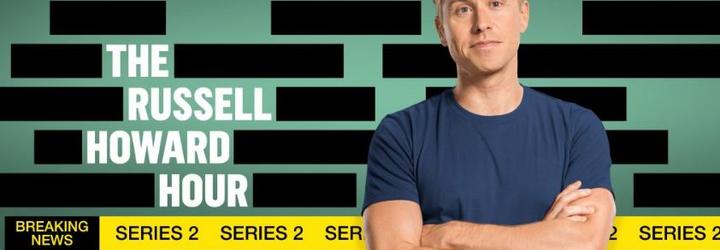
White Light Makes Appearance on The Russell Howard Hour
White Light recently supplied the technical system to run all of the visual content on series two of The Russell Howard Hour.
WL has a renowned reputation in the broadcast industry, having worked with Eurosport to deliver its record-breaking coverage of the Olympic Winter Games in PyeongChang last year, which won the IBC Innovation Award for its immersive LED mixed-reality studio. The company also works throughout the year on broadcasts for BBC, BT Sport and ITV Sport and recently worked on The RTE Late Late Show which was recorded live at Central Hall Westminster. As an organisation known for combining its technical expertise with access to the very latest technology, the company was approached by Avalon to work on the latest series of The Russell Howard Hour which was recorded at BBC StudioWorks in White City.
WL’s Media Systems Specialist Alex Loftie comments: “We worked closely with Avalon to provide a system to run all of the content being sent to the screens throughout the studio. This included those positioned behind Russell Howard which acted as his backdrop and a point of reference for most segments; hence it was vital that we supplied a smooth system that ran exactly to his comedic timing. With any comedy show, it’s extremely important to capture the recording of an audience’s response the first time round hence we had to ensure the technical support was completely reliable and prevented the need to rerecord any segments”.
Alex’s role on the broadcast was to program the content appearing on the screens for each episode. He comments: “The content used was based on a main run of the show but changed every week depending on what topics were being discussed; hence we had to utilise a system that would respond quickly to any last minute changes. On the day of recording, I would rig our system, check that everything was working correctly and then program in the new bits of content for that day’s show which would include different guest introductions, changing the topic images and, from time to time, adding a new section bespoke for that particular episode”.
Once this was complete, there would be a rehearsal in which Alex would operate all of the cues. One of the most important aspects of WL’s role was to create a relaxed, helpful environment for the client which allowed them to feel at ease and completely confident that no disruptions would occur; hence they could just focus on the show itself.
To achieve this, WL drew on the disguise media server, which it has also used on other high-profile broadcasts. Alex explains: “We had a master machine positioned in the gallery controlling a slave machine in the studio which was sending content to the screens. We also had a third machine as a backup with an auto failover system. This would kick in and switch to our backup machine if the other machine was to fail; allowing complete reliability and ensuring that the show would run flawlessly”.
The server linked into the BBC Studioworks in-house system which allowed the vision mixer to overlay content and graphics on the screens for the audience inside the studio to see and react to. Once the video feeds had been sent to the studio’s system, they could then be distributed around the studio to feed the screens. Another advantage of the disguise system was the ability to see the content live within the visualizer, which allowed Alex to make any last minute changes if required.
Alex comments: “It was fantastic to work on The Russell Howard Hour. The show not only marks another high-profile broadcast relying on our services but also how we’re able to adapt to any project and provide technical solutions bespoke to them”.
Photos courtesy of Avalon.






